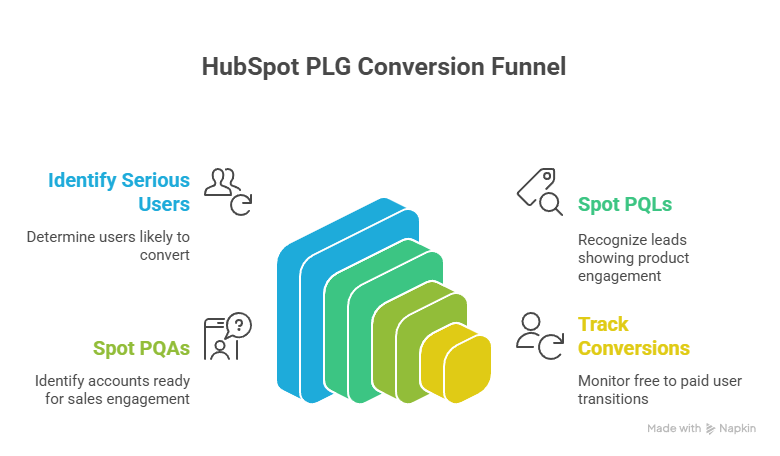

If you run a SaaS company with a product-led growth (PLG) motion, HubSpot can get messy fast.
Free users pile in, but you can’t tell who’s serious.
Sales doesn’t know which accounts to chase.
And upgrades or downgrades slip through the cracks.
This guide shows you how to structure HubSpot so you can:

Lifecycle stages should stay clean and universal. Don’t add “PQL” as a lifecycle stage.
Here’s the SaaS lifecycle we recommend:
👉 Instead of overloading lifecycle, use PLG properties and a PLG pipeline to track product activity.
Two layers matter in PLG:
This way:
Revenue closes at the company level, but product signals often start at the user level.
This ensures sales focuses on real demand, not noise from one-off sign-ups.
Not all upgrades are equal:
Enterprise upgrades are usually sales-driven, but tracking source cleanly gives you attribution for product vs sales.
Use a dedicated PLG pipeline (separate from sales) to track user journeys:
👉 Sales pipeline only kicks in when a company is flagged as PQA and sales creates a deal.

PLG churn happens quietly if you don’t track it.
This gives you clean Gross Revenue Retention (GRR) from PLG accounts.
You can define PQLs in two ways:
Start with hard triggers for clarity. Add scoring once you have more data.
Make HubSpot do the heavy lifting:
Automation ensures PLG tracking isn’t dependent on reps updating fields, just as in the Investor-Ready SaaS Reporting Blueprint, where automated data flows replace manual updates for accuracy and scale.
Your dashboards should show:
This gives you visibility into whether growth is truly product-led or sales-led.

PLG adds complexity, but HubSpot can handle it if you set it up right:
Do this, and HubSpot becomes your engine for turning free users into paying customers.
👉 Want help setting up PLG in HubSpot? [Book a free strategy call].